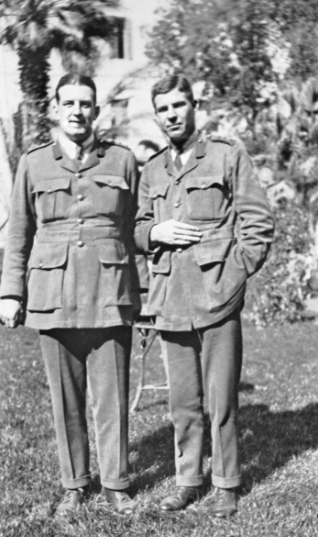SIR RODNEY STUART RIDDELL. 1838-1907.
THE BARON OF ARDNAMURCHON.
WHO FACED THE FIRST BALL OF ALL?
By James Rodgers
On Saturdays 1st and 8th April 1854, Sydney University played its first recorded cricket game.
‘Sydney University’, fielding a team of undergraduates whose ages ranged from 15 to 21, played ‘The Garrison’, a team of soldiers lodged at Victoria Barracks.
The game took place on a field behind the Barracks in Paddington, known variously as ‘The Military Cricket Ground’ or ‘The Garrison Ground’. Later, it would be known as ‘The Military and Civil Ground’. Later still, the ‘Association Ground’. Now it is on the site of what we know as ‘The Sydney Cricket Ground.’
Conditions for the game were primitive. The pitch was uneven, the bats rough-hewn, protective equipment unheard of, the bowling underarm or round arm. There were no boundaries. Each ‘notch’ had to be run.
University’s John Kinloch, “sending down a fairly fast ball with spin from the leg”, hit the stumps of the first four soldier batsmen and The Garrison was dismissed for 49. Beginning the reply, University’s openers were two 16 year olds, Rodney Riddell and Marshall Burdekin.
It appears that Riddell faced the first ball.
Who was the holder of this singular distinction in the Club’s long history?
Rodney Stuart Riddell was the son of the Colonial Treasurer, Campbell Drummond Riddell (1796-1858) and Caroline Stuart nee Rodney (1810-1898) who were married in 1830. Educated at ‘Mr William Cape’s School at Darlinghurst’ (where Riddell’s opening partner, Burdekin, had also been to school), he was one of the first students admitted to the University of Sydney in October 1852, having passed the matriculation exams. Candidates were examined in Greek (‘The Iliad’ book 5 and ‘The Anabasis’ book 1), Latin (‘The Aeneid’ book 1 and Sallust’s ‘Bellum Catalinae’) Arithmetic and Algebra (Euclid book 1). Mr William Timothy Cape (1806-1863) had come to Australia in 1821 and was the first Headmaster of Sydney College, forerunner of Sydney Grammar School, from 1835 to 1841 Cape then established his own school, Elfred House Private School in Glenmore Rd Paddington which was where Riddell and Burdekin had been educated.
Riddell, however, did not complete his Arts degree. His great grandfather, Sir James Riddell, was the first baron of Ardnamurchon, Argleshire in Scotland and the hereditary title was eventually to pass to his great grandson. In the meantime, Rodney Riddell became a professional soldier, serving in the New Zealand wars in the 1860s, then as a Captain of the 7th Foot in the Afghan War 1878-1880. He succeeded to the Baronetcy in 1883, was knighted, and served as Honorary Lieutenant Colonel Sir Rodney Riddell in the Sudan campaign of 1885.
When he died in 1907 without marrying and without issue, the Baronetcy lapsed.
What of his batting partner, Marshall Burdekin?
He was one of the first from Sydney University to be conferred with a Master of Arts in 1859. He became a barrister and a member of the Legislative Council of NSW before his death in 1883.
And what about the game?
The Garrison made 49. University totalled only 33 but Riddell’s 14 was a substantial score before he was caught by Private Hartnett. Kinloch took at least four wickets in the Garrison’s 2nd innings of 35 and University scraped home by two wickets.
Which university cricketer bowled the first ball in the Garrison’s innings 167 years ago?
In all probability, 21 year old John Kinloch, born in Dublin of Scottish heritage.
Who faced the first ball in University’s innings?
In all probability, 16 year old Rodney Riddell, later the fourth baron of Ardnamurchon in Scotland.








